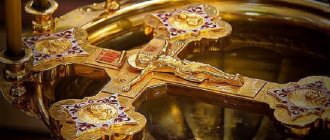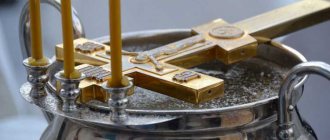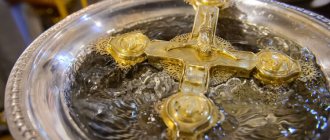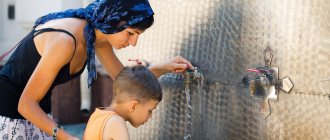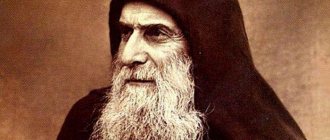We were told about the village in the Chekhov district of the Moscow region by neighbors whom we met one day at the car, unloading cans of water. It turned out that they do not buy drinking water, but prefer spring water, so they are well familiar with the geography of the springs in the Moscow region. One of them is the holy spring Talezh; The same neighbors explained how to get there by car from Moscow. We were interested in the spring not as a source, but as a holy “praying” place. After all, it is located in the courtyard of a monastery that is more than 500 years old. This is the Ascension David’s Hermitage - 30 kilometers from the source. Nearby is Melikhovo - Chekhov's estate. Therefore, on a journey to the source, you can at the same time discover these attractions.
Talezh holy spring how to get there by car or on your own
The village is located approximately 70 km south of Moscow. The path is not difficult to find: you just need to be attentive to the signs, of which there are many along the road.
By public transport: by train from Kursky Station to Chekhov. Chekhov bus station - next to the railway station. From there, take a minibus or bus No. 25 to Talezh.
For car travelers: along the M2 highway (Simferopol highway) to the 72nd km, there you turn left through a right turn, drive through the bridge towards Melikhovo.
The road winding among the pine trees is very picturesque. You pass the cottage village Sosnovy aroma, Melikhovo - A.P. Museum-Reserve. Chekhov, a few more kilometers - and you are at an intersection with a large sign “Talezh”. Not just a sign, but a beautifully designed sign, topped with a dome with a cross.
Turning left, drive about half a kilometer along a field road to the village of Talezh. You meet another sign - a simple sign “TALEZH” - after it you drive about 100 m to the arrow indicating “SOURCE”.
Next, about 200 meters, there is a narrow road: it is difficult for two cars to pass each other. You will find yourself in a large parking lot, filled with cars on weekends. We were glad that we chose a weekday for the trip. And at the source, I didn’t want to feel like I was “in the crowd.”
Spring in the village of Talezh
The ancient spring in the village of Talezh, Chekhov district can be considered, perhaps, one of the most beautiful and well-maintained holy springs in the Moscow region. In addition to the water basin, there are two separate wooden frames for men's and women's baths, a small church of St. David of Serpukhov and a belfry. It’s hard to believe that several decades ago this revered place was almost abandoned, and its improvement began only in 1995.
The past of the village of Talezh
The very name of the village Talezh indicates the springs that have flowed here since time immemorial. In documents of the 14th and subsequent centuries, this place was called slightly differently: Talezhskoe, Talesskoe, Talezhi. B. Wagner, in his book on the origin of place names near Moscow “The Map Tells,” suggested that the word “talezh” is derived from the verb melt. Many verbal nouns known to us are formed according to the same principle, for example: draw - drawing, chop - boundary, and so on. In the old days, the word “talezh” was used to describe an unfreezing spring or stream. Another village near Moscow, Talitsy, Pushkinsky district, has a similar origin.
The village became famous at the end of the 18th century thanks to its owner, Count Vladimir Orlov. In those years, Empress Catherine the Second gave the village of Semenovskoye and the adjacent village of Talezh to her famous favorite Grigory Orlov, but the queen’s favorite gave it to his younger brother Vladimir. Vladimir Orlov built a wonderful estate in Semenovskoye, and in Talezh the Church of the Nativity of the Virgin Mary, built by him, has been preserved. Almost a century later, these lands were glorified by Anton Pavlovich Chekhov. Just six kilometers from the source there is a museum-estate in Melikhovo, dedicated to the life and work of the writer.
We find documentary evidence that the source in Talezh has long been considered miraculous by the surrounding residents in the records of the local priest Pavel Velichkin, who served in the above-mentioned “Oryol” Church of the Nativity of the Virgin. In 1892, the priest wrote: “In the village of Talezhi, from time immemorial, on the day of the Prophet Elijah, after the liturgy, a procession of the cross is held for the blessing of water to the water springs at the northern end of the village, which are revered as healing.” The same entry also mentions a rumor that connected Talezh with the hermit David Serpukhovsky: “Within the borders of the village of Shelkovaya, at a distance of two miles from it, in the forest there is a small clearing in which very ancient linden trees grow in a small circle, and this clearing, according to the local According to legend, this is the place of the initial settlement of the Monk David.” The village of Shelkovaya is located not far from the spring, so it can be assumed that Saint David, before founding his monastery in its current location, actually lived for some time in the forest near Talezh and used water from its spring.
David Serpukhovskoy and Joseph Volotsky
Saint David spent most of his life in the Pafnutev-Borovsky Monastery. He was a student of Saint Paphnutius and a friend of the famous preacher Joseph of Volotsky. In 1515, David left the Borovsky monastery and, together with several monks, headed to the Serpukhov lands. Having chosen a suitable place near the bank of the Lopasni River, the hermits built wooden cells and a small church. In the same year, Joseph of Volotsky visited David in his small monastery, thereby blessing the beginning of a new monastery. The year 1515 has since been considered the date of the founding of the Davidic Hermitage, which celebrated its five hundredth anniversary two years ago.
The founding of the monastery came at a difficult time in the religious life of the Moscow kingdom. There was also unrest in Europe. In 1517, Catholic priest Martin Luther began his sermon, calling for reform of the rites and dogmas of the Western Church. His activities became one of the reasons for the split within Western Christianity and the long bloody wars between Catholics and Protestants. A little earlier, a new religious doctrine appeared in Moscow and Novgorod, whose representatives rejected church rituals, the worship of icons, saints and considered Jesus Christ a simple man. They placed above all else the books of the Old Testament, which described the history of the Jewish people and their prophets, for which they received the nickname “Judaizers.”
The heresy quickly spread in Moscow and Novgorod, engulfing the clergy, rich and educated people. Even members of the grand ducal family began to lean towards the new religious movement, and, perhaps, the Moscow Metropolitan also secretly joined it. Joseph Volotsky, a friend of Saint David, became one of those who led the movement in defense of Orthodox Christianity from the spreading heresy. He had great influence, including on the Grand Duke. His irreconcilable position towards the “Judaizers” quite possibly saved the country from religious wars, preventing the new teaching from growing into a real political force. Having achieved the condemnation of heresy at a church council, Joseph also gained the upper hand in a dispute with the so-called “non-covetous” who, although they did not deny Christian dogmas, called on the church to abandon the lands and wealth that belonged to it in favor of the state.
"Life-Giving Spring"
Above the water basin of the Talezh spring in the chapel there is a mosaic icon of the Virgin Mary, which is depicted together with the baby Jesus, as if inside the bowl of the fountain. This type of icon is called the “Life-Giving Source.” The custom of dedicating water sources to the Virgin Mary and building chapels with such icons came to Russia in the 16th century from the Greeks. Among the Greeks themselves, this custom was inspired by the legend of the miraculous appearance of the Virgin Mary to the Byzantine emperor Leo Marcellus. Even before Leo became monarch, he once met a blind man near Constantinople who asked to give him water to drink. The lion took pity on the blind man and began to look for water in a grove that was nearby. Suddenly he heard the voice of the Virgin Mary, who showed him the place of the well and ordered him to wash the sick man’s eyes with water. The lion fulfilled the command, after which the blind man began to see. Having become emperor, Leo erected a monastery on the site of the grove and called it the “Life-Giving Spring.”
Nowadays, many cases of healing of diseases from the water of the source in the village of Talezh are known. One of them describes a cure specifically for an eye disease: “Several years ago, two daughters brought their mother to David’s hermitage. She had an accident on the subway: when she fell, she hit her head, which resulted in visual impairment. Doctors diagnosed him with optic nerve atrophy. The woman could only look down, her eyelids did not lift. We got on the bus and went to the source of St. David in Talezh. Mom could not immerse herself entirely in the water, she only doused herself with prayer. She came out and said: “Oh, what beauty all around!” The daughters realized that a miracle had happened, and the Monk David restored her sight.”
How and when to visit a holy place?
Visiting the source is possible on any day, except Monday. Opening time is 8.00, closing time is 21.00.
You can baptize a child or get married at the holy spring in Talezh. Photography and video filming during these ceremonies is not permitted. Wedding sacraments do not take place during fasting periods and the newlyweds and their guests are prohibited from entering the holy lands. When visiting a holy spring, dress modestly and take hats with you. Everything here amazes with its splendor and harmony. Pristine nature is superbly complemented by man-made details and buildings. Many plants in this area are listed in the Red Book. People who visit this place leave with peace and tranquility in their hearts, as if the Lord himself blessed them by washing with water from the holy spring of David of the Ascension in Talezh.
David's desert. Holy spring Talezh.
Alyona
Visiting holy places was not my goal this year, but I did it and I can tell you that I do not regret my decision. Initially, we were supposed to go with a friend, but she refused as a last resort, and I had to go on my own. After my arrival and my report, my friend very much regretted that she could not go too. It all started in Moscow near the Krylatskoye metro station, where our tourist bus was parked. As I approached, I immediately noticed the fact that the bus was of good quality, modern and would certainly be comfortable. Also standing at the entrance to the bus was Tatyana, who was the organizer of our tour. The woman is young and energetic, this is immediately noticeable. She loves her job, takes care of her clients and does everything necessary to ensure that the tour is of the highest quality possible and leaves behind positive reviews. I appreciated it and am very grateful to such a person. There was a guide with us who was involved in Orthodox Christianity, so he really could tell us a lot of interesting things. The departure took place at 7:30 am, everyone was cheerful and rested. We arrived quite late, but took part in the Divine Liturgy, it was unforgettable and really interesting. After this we received our lunch in the monastery refectory. The food tasted good, of course, but at the same time everything was filling and quite tasty, everyone was satisfied. After this lunch, we were given a tour of the monastery led by a professional Orthodox guide. I couldn’t even think that the monastery could have such a rich, interesting and truly fascinating history. We saw the relics of saints. Dipped into holy water. We saw many different temples and learned a lot of interesting things about their history. The next day we visited the village of Talezh, where the Church of the Nativity of the Virgin Mary is located, which also brought its own energy and positive mood. In fact, I was surprised at how much I saw, heard, and learned in such a short tour. Initially, I thought that we would visit a small monastery and that’s it, but everything was on a larger scale and thanks to our organizer for that. I really got exactly what I wanted from such an Orthodox tour. There is not just faith and holy places here, there is a long history that every person should know. The temples are of international importance, which is why they are visited by a huge number of people every year.
Routines and rules of behavior
Local residents will be happy to share their knowledge, recommend an acceptable route to the Talezh spring, and point out picturesque places.
There is an official website on the Internet where all the necessary information is posted:
- news of the Christian world;
- schedule of services in churches;
- performing sacraments and requirements;
- ordering commemorations at proskomedia;
- history and features of modern life in the Davydova Hermitage;
- details and contact information;
- behavioral characteristics and necessary accessories in case of bathing.
Here you can easily get answers to any questions you may have via the specified mobile phone or email, or communicate with the excursion organizer. On the main page of the site you can read reviews from ordinary pilgrims and celebrities. People describe their impressions and feelings, share their experiences, and give advice.
It is logical that in a holy place a person should remain cultured and conscientious. Neat clothes without provocative designs or accessories, properly covered body, no exposure, quiet, calm speech.
Women will need skirts below the knees, scarves or scarves on their heads, men will have to give up shorts for a while. Bathers should stock up on a towel and a change of underwear.
Important! The spring of St. David is a place of prayer. You will have to leave your beloved animals at home. They will not be allowed into the territory with them.
The opening hours of the Talezh holy spring are clearly regulated and subject to internal regulations.
All year round the courtyard is open to the public from 8.00 to 21.00 from Tuesday to Sunday. On Monday there is a sanitary day. If there is a need or desire to combine a trip to the Talezh source for holy water and attending a service in the temple, then the time must be additionally planned.
Everyone chooses the time of year at their own discretion. The monastery has its own charms both in winter and in summer. Holy water in the Talezh spring never freezes and retains all its healing properties.
Informative! We arrange a corner home iconostasis with our own hands
Local Legends
The beautiful nature of these places with numerous springs has given rise to many unusual legends. According to one of them, Count Orlov liked one simple girl, and, in a fit of feelings, he allowed himself to do too much in relation to her. The count, wanting to receive forgiveness, gave the girl a ring with a magnificent diamond. The gift was thrown away, and the girl ran away crying. At the place where the ring touched the ground, a key subsequently hammered in. Another legend about the appearance of a holy spring in the village of Talezh near the Monastery of David's Hermitage, which is passed down from generation to generation, is the most plausible. Back in the days of paganism, a mighty oak tree stretched at the bottom of the ravine. People revered this oak as a shrine, worshiped it and brought gifts. When Prince Vladimir sent envoys to these places with the aim of instilling the Christian faith in the peasants, they met his detachment without joy. But then a miracle happened. At night there was a terrible thunderstorm and the mighty oak tree, to which people turned for help, was killed by lightning. But in the place where the oak tree stood, a pure spring began to flow. It was at this very place that the pagans accepted the Christian faith. But according to official data, the source was consecrated only in the nineties of the twentieth century.
More information: https://www.rutvet.ru/svyatoy-istochnik-talezh-11333.html
Share the news
father Yuri
We recommend that you read
It is planned to prepare 220 places for Epiphany bathing in the Moscow region
January 14, 2021
Savvino-Storozhevsky Monastery in September
September 01, 2020
Torzhok is a wonderful city in the Tver province
July 27, 2020
Categories
- Videos from Talezh visitors (176)
- Prayer book (1,567)
- News (32)
- Orthodox church events (37)
- Articles (16)
More about the book
Calendar
February 2020
| Mon | W | Wed | Thu | Fri | Sat | Sun |
| 1 | 2 | |||||
| 13 | ||||||
| 18 | 19 | 22 | ||||
about the project
The unofficial site about the Holy Spring in Talezh https://talezh1.ru is a socially useful information resource. All information is taken from the web archive, YouTube and other open sources.


